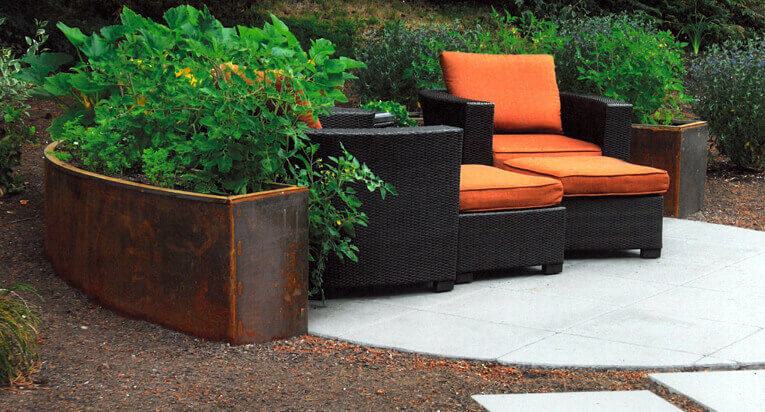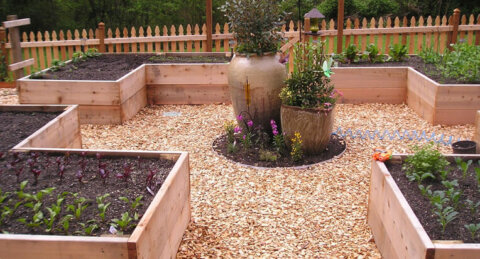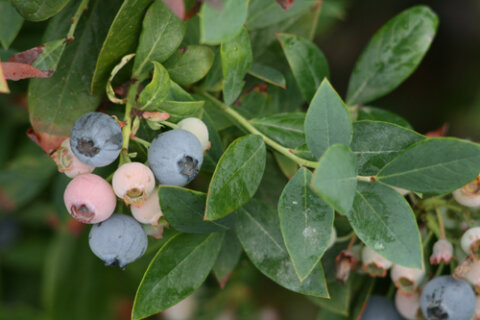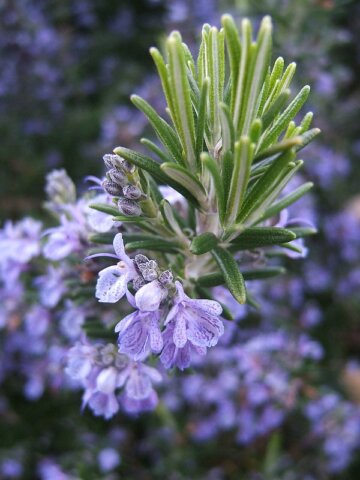
Edible plants can provide both beauty and food to your landscape. In Harmony design/install.
Many people are interested in raising food to feed their family. When we design landscapes for our clients, we like to include edible plants in both vegetable beds and ornamental beds. Many edible plants are also beautiful, making your garden both more attractive and more productive.
Vegetable gardening

Vegetable gardens with raised beds are a convenient and attractive way to grow food for your family. In Harmony design/install.
We generally use raised beds in our vegetable garden designs. Raised beds stand above ground level, so the soil level of the bed is higher than the surrounding soil. The beds are often enclosed in boxes or frames to provide structural support and prevent erosion. The frames or boxes could be made of various materials, such as cedar or other decay-resistant wood, wood with a plastic liner, galvanized steel or resin.
According to WSU Extension, raised beds have some great advantages over in-ground gardens.
- “They provide great drainage, especially needed with our heavy, clay soils, which tend to hold water very strongly.
- The soil in a raised bed warms earlier in the spring and stays warmer later in the fall.
- The higher beds are easy to access for those with back or mobility problems.
- Weeds and pests can be easier to control.
- They can enhance the beauty garden.
- A raised bed can be covered in winter, providing an opportunity to grow some cool weather crops for all-winter use.
- Poor native soil can be enriched only where necessary.
- Irrigation and fertilization needs are limited to the raised beds and not the surrounding pathways.”
Ornamental edible plants
Consider adding edible flowers to your vegetable garden. You could also plant them elsewhere in the landscape. Here is a list of edible flowers for the Northwest gardener from Swansons Nursery. Some are annuals and others are perennials. All will make your landscape more colorful.

Blueberries are attractive shrubs with edible fruit. © Richie Steffen / Great Plant Picks.
For easier maintenance, you may want to emphasize perennial edible plants, rather than annuals, in the ornamental landscape. For example, you could add trellises for grapevines or raspberry canes. Blueberries and evergreen huckleberries are attractive shrubs for ornamental beds. Strawberries can be used as ground cover. Rhubarb and artichokes grow to become large and striking plants.
You could also add fruit trees to your landscape. There are many varieties of apples, pears, peaches, plums and cherries that grow well in the Seattle area. You will get flowers in spring, fruit in summer or fall and structural bones all year. Here are some recommended varieties for the Puget Sound region from NW Fruit.

Herbs such as rosemary add both beauty and fragrance to your garden, and you can snip them for cooking. Tiger500, Flickr.
Herbs add both beauty and fragrance to your garden. Many perennial herbs, such as rosemary, sage and lavender, are long-lasting, drought-tolerant and require little maintenance. You can cut a few stems to add to your dinner, while enjoying their blooms in season. Many also stay green through the winter. Annual herbs such as basil and parsley work well in flower beds. Here are tips on growing herbs from WSU Extension.
Annual edible plants do have their place in ornamental beds. For example, lettuces and other salad greens are beautiful, rainbow chard has colorful stems, and tomatoes grow well in patio containers. You may want to place them with annual flowers, since both will need more water and care than most perennial plants.
Consider what each plant needs
When adding edible plants to ornamental beds, consider each plant’s look, shape, size and growing requirements. What plants look good together and complement each other? Which grow well in the same conditions? Some may prefer sun while others prefer shade. Some require lots of water, while others thrive in drier conditions. Group plants with similar requirements together.
We can help
We can help you plan and design an edible landscape that both looks beautiful and provides food for your family. Check out our portfolio for a few more of our vegetable garden designs. Contact us for more information or to set up an appointment.
